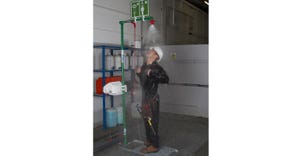What Is the Best Type of Feeder for My Application?
July 22, 2014

There are many types of feeders available today. The most widely used include rotary valves, vibratory trays/tubes, belts, and screw feeders. The type of feeder to be selected for a particular application is dependant upon several factors. First, it is essential to clearly define the application parameters. These include the feed rate range, accuracy requirements, temperature and/or pressure considerations, possible dimensional restraints, the type of system used to get the material to the feeder, and to what downstream equipment the feeder will discharge. Then, it is essential to define the characteristics of the material to be fed. Establishing these parameters will reduce the available feeder types that are applicable to your specific application.
For purposes of this article we will focus exclusively on volumetric metering devices. Incorporating these devices into a weight-loss weigh feeding system can greatly enhance overall performance and accuracy.
If you have limited headroom, a belt feeder is a possible option. Even with its low profile, it can be capable of high rates. When empty, there is no residual material remaining (except perhaps some minimal coating). Belt feeders are best suited for materials that are not dusty and are well suited for friable types of materials. The negatives associated with this type of device include housekeeping issues (when used on dusty materials), maintaining proper belt tracking, and replacing belts can be difficult and time consuming.
While more commonly used as a refill device, rotary valves can be a desirable option as a feeder. They are well suited for use where pressure and/or vacuum are present and there is a desire to isolate this from upstream and downstream equipment. When using this device, one must consider the flow characteristics of the product. It may be necessary to use air injection, vibration, or some sort of agitation to promote flow out of the bin and into the vanes of the rotary valve. This device also operates at relatively low RPM (typically a maximum of 20 to 25). This pulsation may not be desirable in certain applications where smooth flow of the material is a requirement. In addition, rotary valves are not suited for materials that are adhesive. They can also jam easily if some foreign material is in the product. For this reason it is recommended that a maintenance gate is installed above the rotary valve to facilitate access to the unit.
Vibratory trays/tubes are another good option for materials that are friable. Also, when properly applied, these devices will empty completely. Since a hopper will transition down to the tray/tube opening it may not be suitable for materials with poor flow characteristics. In some instances an agitator or vibrator may be used to induce material flow. Also adhesive materials can adhere to the tray/tube and result in poor performance. A single device will have a limited feed rate range. Also, the output tends not to be linear.
Screw feeders are probably the most commonly used devices in this group. This is due to the fact that there are so many configurations available that make them the most versatile and, as such, they can handle the widest range of products. There are light-duty and heavy-duty models. There are models designed for quick change over of products (with minimal residual). There are a vast number of sizes to meet almost any feed rate requirement. Typically, one feeder can achieve a wide feed rate range rather easily with just a few component changes (e.g. metering auger, discharge cylinder, etc.). There are models that are designed for minimal downtime with extremely low maintenance, and spare parts requirements.
Once you have established all essential parameters and decided on the device (or devices) you believe will best suit your needs, it is always a good idea to have a potential supplier test your product. If possible, witnessed testing is highly recommended. This will give you first hand experience with the supplier and allow you to assess their capabilities, while at the same time determining if the recommended device will meet the requirements of your specific application.
Paul Matarazzo is the manager of Acrison Inc.’s customer demonstration facilities and is an internal consultant on the selection and application of its dry solids metering, hoppering, and blending equipment. He has 37 years experience with Acrison, holding positions as project engineer, applications engineer, and supervisor of the company’s test facilities. He has a BSME from Manhattan College and is the co-author of two international mechanical patents held by Acrison.
For related articles, news, and equipment reviews, visit our Feeders Equipment Zone
You May Also Like


